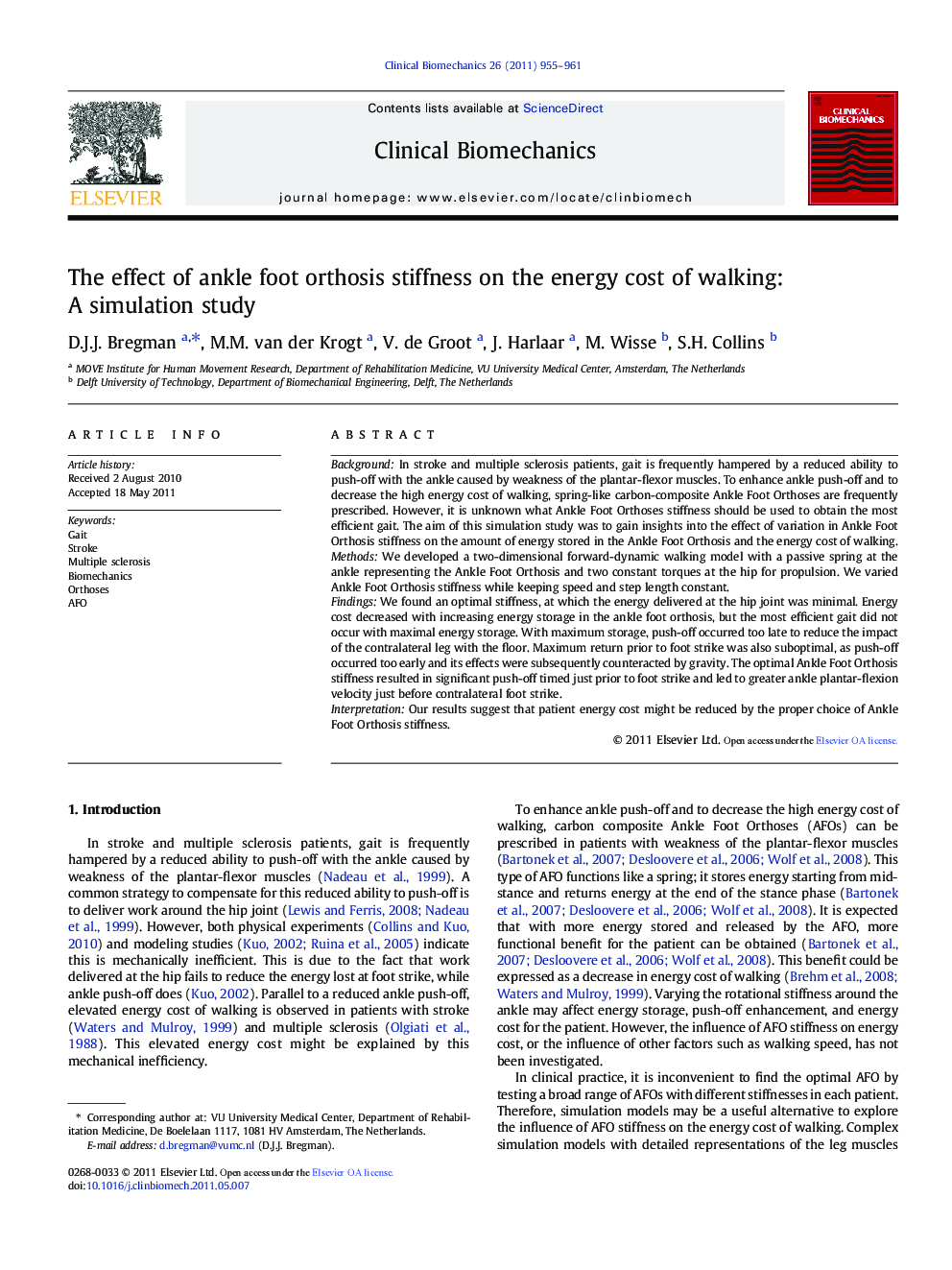| Article ID | Journal | Published Year | Pages | File Type |
|---|---|---|---|---|
| 6205197 | Clinical Biomechanics | 2011 | 7 Pages |
BackgroundIn stroke and multiple sclerosis patients, gait is frequently hampered by a reduced ability to push-off with the ankle caused by weakness of the plantar-flexor muscles. To enhance ankle push-off and to decrease the high energy cost of walking, spring-like carbon-composite Ankle Foot Orthoses are frequently prescribed. However, it is unknown what Ankle Foot Orthoses stiffness should be used to obtain the most efficient gait. The aim of this simulation study was to gain insights into the effect of variation in Ankle Foot Orthosis stiffness on the amount of energy stored in the Ankle Foot Orthosis and the energy cost of walking.MethodsWe developed a two-dimensional forward-dynamic walking model with a passive spring at the ankle representing the Ankle Foot Orthosis and two constant torques at the hip for propulsion. We varied Ankle Foot Orthosis stiffness while keeping speed and step length constant.FindingsWe found an optimal stiffness, at which the energy delivered at the hip joint was minimal. Energy cost decreased with increasing energy storage in the ankle foot orthosis, but the most efficient gait did not occur with maximal energy storage. With maximum storage, push-off occurred too late to reduce the impact of the contralateral leg with the floor. Maximum return prior to foot strike was also suboptimal, as push-off occurred too early and its effects were subsequently counteracted by gravity. The optimal Ankle Foot Orthosis stiffness resulted in significant push-off timed just prior to foot strike and led to greater ankle plantar-flexion velocity just before contralateral foot strike.InterpretationOur results suggest that patient energy cost might be reduced by the proper choice of Ankle Foot Orthosis stiffness.
